U.S. Postwar Immigration Policy
Immigration has been an important element of U.S. economic and cultural vitality since the country’s founding. This timeline outlines the evolution of U.S. immigration policy after World War II.





Quota System Upheld
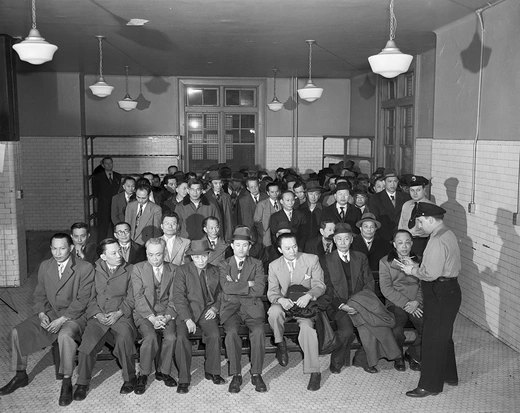
As the Cold War deepens, the U.S. government consolidates its immigration and naturalization laws into one comprehensive federal policy. The McCarran-Walter Act ends policies stemming from the late nineteenth century designed to exclude Asian immigrants. However, the bill upholds the ethnicity-based quota system for new immigrants that favored white Europeans, revising limitations to admit one-sixth of 1 percent of each group already in the United States. President Harry Truman vetoes the bill, citing discrimination against Asian immigrants and decrying the “absurdity, the cruelty of carrying over into this year of 1952 the isolationist limitations of our 1924 law.” Congress overrides him to pass it.
Eisenhower Launches ‘Operation Wetback’
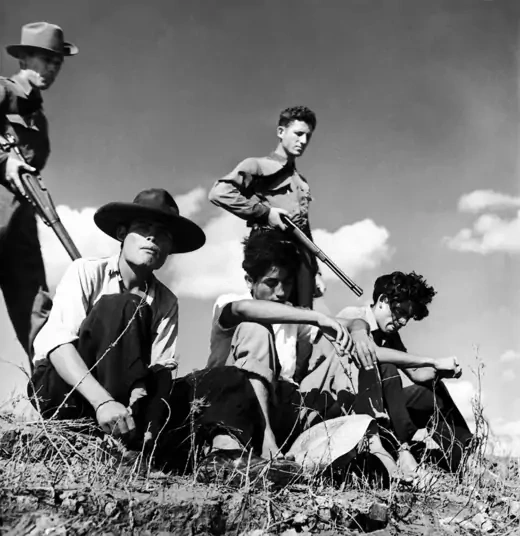
The postwar period causes a swell of illegal immigration to the United States from Mexico, with an estimated three million undocumented Mexicans in the country working mostly in agricultural jobs at significantly lower wages than what American workers receive. Under growing public pressure to act, the Immigration and Naturalization Service under President Dwight D. Eisenhower enacts a nationwide sweep of undocumented Mexican immigrants in the southwestern United States. The sweep, officially termed “Operation Wetback,” authorizes 1,075 Border Patrol agents, along with local law enforcement, to target barrios in California, Arizona, and Texas.
Hungarian Revolution Fails

Hungary’s failed revolt against Soviet control triggers an outpouring of refugees. The Eisenhower administration uses a provision in the McCarran-Walter immigration act authorizing the admission of aliens on a temporary basis under emergency conditions. Eisenhower employs parole powers—presidential authority to take unilateral action in emergencies—included in the immigration act to admit around thirty thousand Hungarian refugees. By 1960, more than two hundred thousand Hungarian immigrants are accepted into the country, and Eisenhower’s use of parole powers marks a precedent used in later decades to grant tens of thousands of refugees from around the world asylum in the United States.
Cuban Exodus

Fidel Castro and his guerrilla forces overthrow the government of Fulgencio Batista in Cuba in January 1959 and set up a new communist order, resulting in a mass exodus of Cubans to the United States as political refugees. The first wave includes political supporters of Batista, as well as members of Cuba’s elite and middle class, who largely settle in Florida’s Miami-Dade County. The United States eventually enacts the 1966 Cuban Adjustment Act to allow permanent resident status to Cuban refugees who arrive after 1959. About one million Cubans emigrate to the United States between 1959 and 1990.
Sunset on the Bracero Program

Amid mounting pressure from labor activists and welfare organizations, the U.S. government lets its Mexican guest worker program expire after twenty-two years. The Bracero program, instituted in a bilateral agreement in 1942 amid anticipation of a labor shortage in World War II, gave contracts to Mexican workers to be employed in the U.S. agricultural sector. During its operation, about 4.5 million contracts were signed for workers to come to the United States. Although the program stipulates that braceros are entitled to certain provisions—including equal wages to native workers, free housing, affordable meals, and insurance—these rules are broken by many employers. Many of the farm workers are reported to receive a fraction of the wages of American laborers. Lee G. Williams, the last director of the program under the Department of Labor, refers to the system as “legalized slavery.” The end of the Bracero program results in an acceleration of illegal immigration across the border.
Leaving the 1920s System Behind
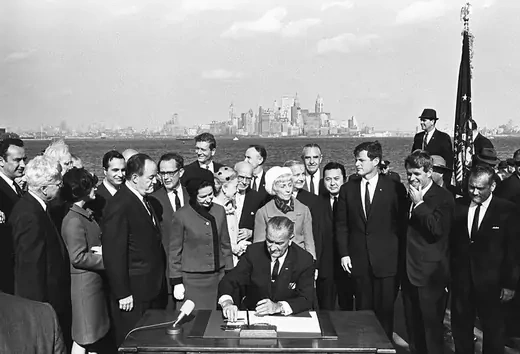
In the midst of the civil rights movement, the government shifts federal immigration legislation away from the quota system and 1920s standards, deemed by President Lyndon B. Johnson as “un-American in the highest sense.” The 1965 Immigration and Naturalization Act [PDF] instead sets up a system of preferences, placing an emphasis on family reunification. President Johnson, signing the bill at the foot of the Statue of Liberty, declares that the legislation “is not a revolutionary bill and does not affect the lives of millions.” However, the bill—through the family preference that allows naturalized U.S. citizens to sponsor relatives to emigrate to the country—sets the course for dramatically altering the demographics of the country.
Jackson-Vanik Pairs Trade With Emigration
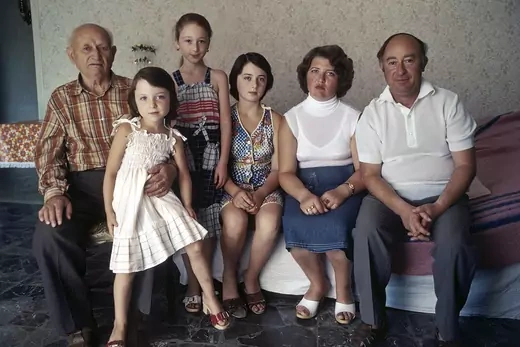
In response to rising calls to assist Jewish refugees from the Soviet Union, Congress moves to enact a human rights-oriented amendment to the Trade Act of 1974. The Jackson-Vanik amendment requires non-market economies to provide free emigration to trade with the United States under “favored nation” status. The amendment receives strong support in Congress and eventually allows for the emigration of more than five hundred thousand people—many Soviet Jews, Christians, and Catholics—to the United States until its repeal in 2012.
Indochina Migration and Refugee Assistance Act

Southeast Asia is racked with turmoil in the 1970s as the Vietnam War winds down, the Khmer Rouge seizes control in Cambodia, and Laos falls under the control of the Pathet Lao. After Saigon is captured by the People’s Army of Vietnam, the Gerald Ford administration enacts the Indochina Migration and Refugee Assistance Act [PDF] to help about 130,000 Southeast Asian refugees. The move receives broad support among civil rights advocates, religious groups, and organized labor, and the number of Southeast Asian “boat people” immigrating to the United States swells by the early 1980s. This new influx, largely brought in by executive parole power, prompts the government to consider a broad overhaul of the nation’s refugee admission system.
U.S. Refugee Policy Aligns With International Standards
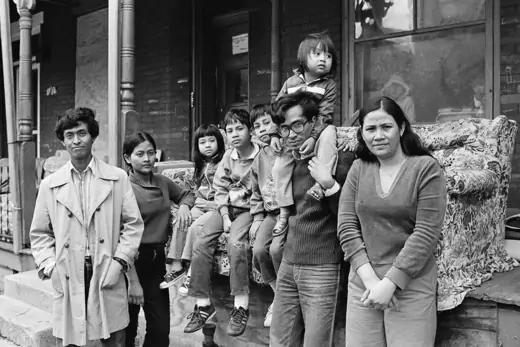
As Southeast Asian refugee numbers mushroom, Congress crafts a bill to systematize U.S. refugee policy, which has relied on ad hoc use of presidential parole power. President Jimmy Carter signs the Refugee Act of 1980, an amendment to the 1965 immigration act that raises the limit of refugee visas granted from 17,500 to 50,000 per year, exempting these numbers from the overall immigration ceiling, and formally establishes the Office of Refugee Resettlement. Additionally, the law modifies the definition of “refugee” to give it more of a universal scope and make it consistent with the UN Refugee Convention, a move that addresses long-standing criticism of the United States’ preference for admitting refugees from communist countries.
Immigration Reform and Control Act

Congress approves the Immigration Reform and Control Act to address the estimated three to five million undocumented immigrants in the country. The policy officially mandates employers to affirm the immigration status of their employees and outlaws the practice of knowingly hiring undocumented immigrants, although the administration’s enforcement of penalties remains lax. Additionally, the law grants legal status for certain seasonal workers and unauthorized immigrants who arrived in the United States before 1982. However, the IRCA’s most significant legacy is its provision to give undocumented immigrants arriving before 1982 the opportunity to apply for permanent residence before May 1988, a measure that eventually grants legal status to 3 million people, of which 2.3 million are Mexicans. Illegal immigration continues to flow after the IRCA’s passage.
A Bid for High-Skilled Immigrants

Looking to focus on legal immigration pathways, President George H. W. Bush signs the Immigration Act of 1990, which expands the 1965 act to allow for an increase in the overall number of immigrant visas granted. While family reunification-based immigration remains a preferential category, priority is also extended to high-skilled and educated workers. The act creates five categories of employment-based (EB) visas as well as the temporary H1B visa for college-educated foreigners, and sets a cap on the number of unskilled workers emigrating into the country. The law also creates a diversity lottery to distribute visas among those from underrepresented countries. After the legislation is passed, the number of annual immigrant visas granted spikes from five hundred thousand to seven hundred thousand.
Launch of Operation Gatekeeper

Bill Clinton’s administration launches Operation Gatekeeper to stave off illegal immigration across the border between San Diego and Tijuana, known for unauthorized border crossings from Mexico. Clinton doubles the number of Border Patrol agents along the southwestern border and authorizes $50 million* to build a fourteen-mile security fence, shifting unauthorized crossings eastward toward deserts and mountains. Shortly after its launch, the government declares it a success, but critics denounce it as a “militarization” of the border, and human rights groups connect it with the deaths of more than five thousand people who attempt to cross the more treacherous eastern terrain in California and Arizona over the next fifteen years.
A ‘Wet Foot, Dry Foot’ Policy for Cuba

The disintegration of the Soviet Union results in a loss of Soviet economic support to Cuba, resulting in a spike in the number of Cubans fleeing to the United States in the early 1990s. In 1994, Fidel Castro threatens to allow for a mass exodus if Washington does not take action against the illegal boat departures from Cuba. Both countries sign migration accords in 1994 and 1995 stating that the U.S. Coast Guard would no longer allow Cuban migrants intercepted at sea and without credible asylum claims; however, those who made it to U.S. soil would usually be allowed a path to citizenship. The policy is highlighted during the 1999 case of five-year-old Elian Gonzalez, found in coastal waters after his mother and ten others die attempting to cross to the United States. Relatives in Miami are denied custody of Gonzalez and he is subsequently returned to his father in Cuba.
DREAM Act Introduced

To address the issue of the estimated 2.1 million minors who are brought illegally to the United States as children, Congress introduces the Development, Relief, and Education for Alien Minors (DREAM) Act, a policy that would carve out a path to citizenship for these young immigrants if they meet certain conditions, including graduating from a U.S. high school or serving two years in the military. The act goes through several revisions and languishes in Congress through the next decade, prompting states to enact their own versions of the DREAM Act to provide in-state tuition for these immigrants. In 2012, President Obama announces a deferred action program that bars this group of immigrants from deportation, and pledges to make the DREAM Act a part of comprehensive immigration reform.
9/11 Attacks and Immigration Changes
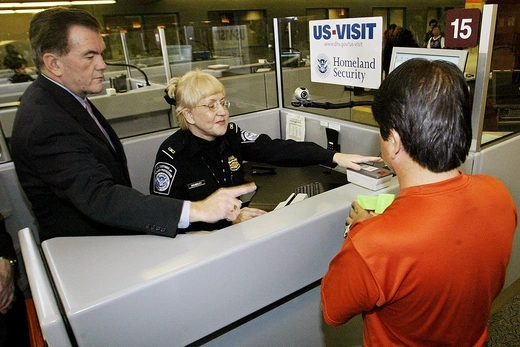
In response to the September 11, 2001 terrorist attacks, Congress passes the Homeland Security Act of 2002, which overhauls the organization of the federal government’s immigration functions. The act dissolves the Immigration and Naturalization Service and creates the Department of Homeland Security, which overtakes all immigration matters. DHS splits immigration services to divide enforcement functions—handled by the Immigration and Customs Enforcement agency—from naturalization and visa functions. The George W. Bush administration makes border security a top priority, strengthening screening and security measures at airports, allowing agents to more easily detain and deport immigrants with suspected ties to terrorism, and instituting more stringent visa application procedures. The government also enacts a program—suspended in 2011—requiring men from predominantly Muslim countries to pre-register and undergo additional screenings while traveling to and from the United States.
Secure Communities Program Pilots
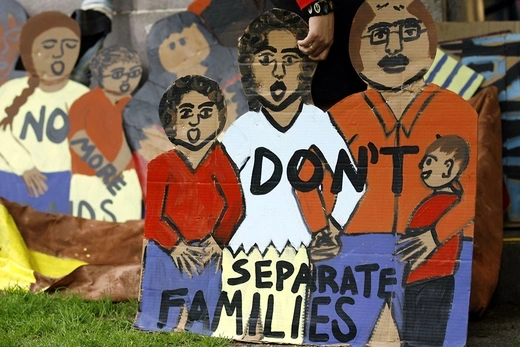
At the tail end of George W. Bush’s presidency, the administration pilots a program that targets undocumented criminals by allowing local law enforcement to share data with the Immigration and Customs Enforcement agency. The program, Secure Communities, is implemented first in Boston and six counties in North Carolina and Texas, with the intention of expanding nationwide by 2013. After President Barack Obama’s election in November, he expands it, with nearly 1,600 jurisdictions enrolled by late 2011. Secure Communities becomes increasingly controversial as critics accuse it of casting too wide a net in apprehending undocumented criminals—deporting large numbers of low-level offenders and eroding trust in local communities. Tensions between local and federal authorities also abound over what are seen as conflicting messages from the Department of Homeland Security over whether the program is voluntary or mandatory.
Arizona Triggers State Activism on Immigration

Frustrated by a perceived lack of federal action to regulate immigration, Arizona Governor Jan Brewer signs SB1070, a restrictive immigration law that makes it illegal to hire, house, or transport undocumented immigrants. It also permits law enforcement to check the immigration status of people during routine stops (known as the “papers, please” measure), prompting fears from civil rights advocates of increased racial profiling. The law is met with nationwide controversy, and at least seven other states attempt to push through their own versions of SB1070. The U.S. federal government files a lawsuit against the state of Arizona, citing federal jurisdiction on immigration matters, and the case is eventually brought before the United States Supreme Court. The court hands down a mixed ruling in 2012, which upholds the controversial “papers, please” provision but strikes down several of the law’s key measures.
Obama Defers Deportation for Youth
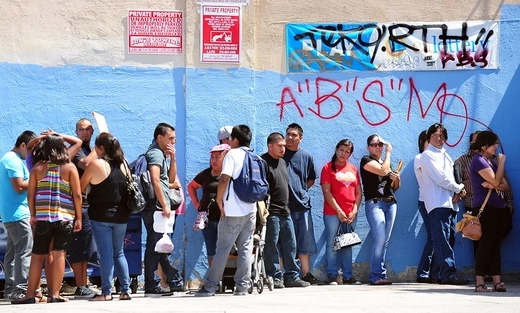
Under orders from President Obama, the Department of Homeland Security begins delaying deportation and granting work visas (for two years) to undocumented immigrants who were brought to the United States as children. More than one million “childhood arrivals” are estimated to be eligible for the so-called deferred action program, often referred to by its acronym DACA. In order to qualify, an individual must have a clean criminal record, lived in the country for at least five years, and be a student, high school graduate, or military veteran. The demographic is similar to that of the DREAM Act. Republican governors and legislators widely criticize the move as an abuse of office intended to curry favor with Hispanic voters.
A Renewed Push for Comprehensive Reform
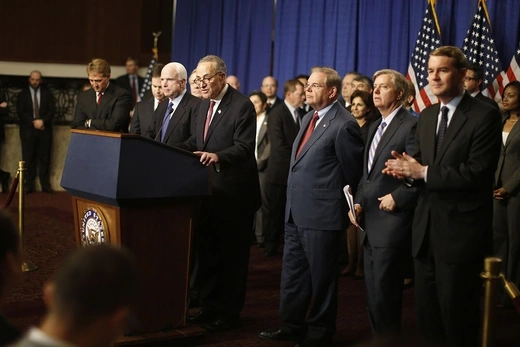
President Obama’s 2012 presidential reelection, aided by strong support from Hispanic voters, brings with it a renewed willingness in Congress to tackle comprehensive immigration reform. Such efforts had faltered since a 2007 compromise bill by Senators John McCain (R–AZ) and Ted Kennedy (D–MA) failed to secure a vote. In early 2013, a bipartisan group of eight senators releases a framework for legislation to create a pathway to citizenship for undocumented immigrants in the country, streamline legal immigration, enhance border security, and implement employer enforcement. The sweeping overhaul bill passes the Senate but fails to move forward in the Republican-led House.
Deportation Relief Programs Prompt Legal Battle
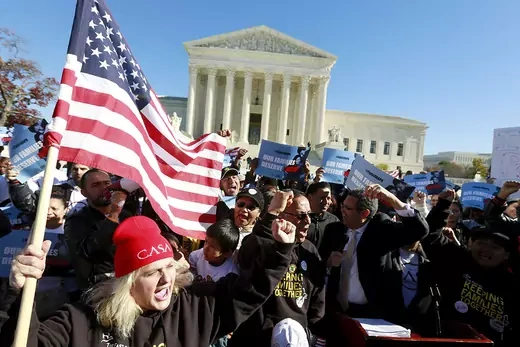
More than two dozen states, most led by Republican governors, sue the Obama administration for failing to enforce the nation’s immigration laws after the president announces his intention to expand DACA and create another program, known as DAPA, to provide relief to the undocumented parents of U.S. citizens and permanent residents. The White House says the programs are similar to those of past administrations and are necessary given congressional gridlock on immigration reform. Roughly four million people are estimated to be eligible. In early 2015, a federal judge blocks the programs until the case can work its way through the courts. A Supreme Court decision is expected in the summer of 2016.
United States Responds to Global Migrant Crisis
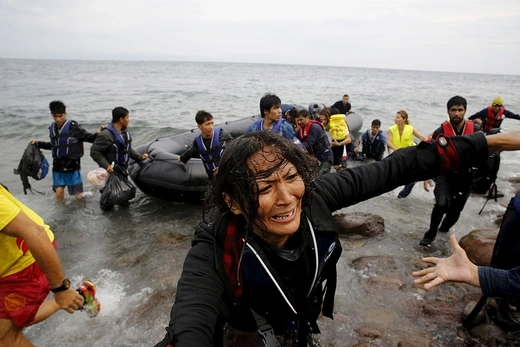
U.S. Secretary of State John Kerry announces plans to increase the number of refugees admitted into the country annually from seventy thousand to a hundred thousand by 2017. The move comes amid conflict in the Middle East, Africa, and South Asia, which has sparked the largest global migration crisis since World War II. The White House pledges that among them would be at least ten thousand Syrians fleeing the four-year civil war, which has displaced more than eleven million people.
Trump Orders Immigration Restrictions

A week after entering office, President Donald J. Trump signs an executive order on terrorism prevention that suspends the refugee program for 120 days, bans Syrian refugees indefinitely, and decreases the cap on refugee admissions to fifty thousand. It also bans nationals of Iran, Iraq, Libya, Somalia, Sudan, and Yemen from traveling to the United States for ninety days. Thousands protest the so-called Muslim travel ban in cities, particularly at airports, where dozens of foreigners are detained by immigration officials. In February, a federal judge imposes a nationwide restraining order on the ban. The Trump administration revises the executive order twice, and in June 2017 the Supreme Court allows the third iteration to take partial effect.
U.S. Supreme Court Upholds Travel Ban

The high court votes 5–4 to allow the third version [PDF] of the Trump administration’s travel ban, ruling that it is within the scope of presidential authority under the Immigration and Nationality Act. The majority opinion also says that President Trump’s past incendiary statements about Muslims do not undermine the order, which in its revised form affects travelers from five Muslim-majority countries, as well as those from North Korea and Venezuela. In her dissent, Justice Sonia Sotomayor writes that “a reasonable observer would conclude that the Proclamation was motivated by anti-Muslim animus.”
Family Separations Prompt Protests
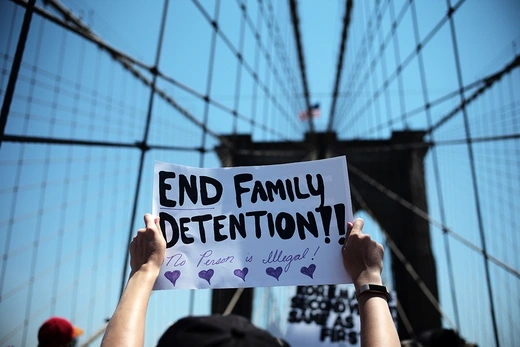
Hundreds of thousands of people across the country protest a new zero-tolerance policy on illegal border crossings that separates several thousand migrant children, many of whom are asylum seekers from Central America, from their parents or guardians. Under the policy, announced by Attorney General Jeff Sessions in April, all undocumented immigrants who enter the United States are arrested and then criminally prosecuted, while minors traveling with them are detained separately. In response to the outcry, President Trump signs an executive order in June to end family separations, though Justice Department officials maintain that the zero-tolerance policy stands and protests against the mistreatment of migrants in detention centers persist.
Trump Moves to Curb Asylum Requests

The number of Central American migrants attempting to reach the United States spikes, with U.S. officials reporting close to six hundred thousand apprehensions at the southwest border in the first half of 2019, roughly the same as in all of 2018. On July 15, the Trump administration issues a rule that bars migrants who travel through third countries from seeking asylum in the United States if they have not already sought asylum in the transit country. It is the latest in a series of moves by the administration aimed at restricting asylum applications, including narrowing the criteria for asylum and requiring that asylum requests be made at designated ports of entry. As with the earlier measures, rights groups say they will challenge the order in court.
Coronavirus Ushers in More Restrictions

On March 13, Trump declares a national emergency over the pandemic of a new coronavirus disease, COVID-19, which reinforces his restrictive immigration approach. All nonessential travel is prohibited and border officials are authorized to immediately expel migrants and asylum seekers, overriding the usual due process. Other measures include halting refugee resettlement, effectively shutting down the asylum system, pausing all immigration court proceedings, and suspending the issuance of many foreign worker visas and green cards. In the months that follow, the administration seeks to cement many of these changes, while the State Department announces it will slash refugee admissions to a maximum of fifteen thousand people, the lowest level in four decades.
Biden Grapples With Migration Surge
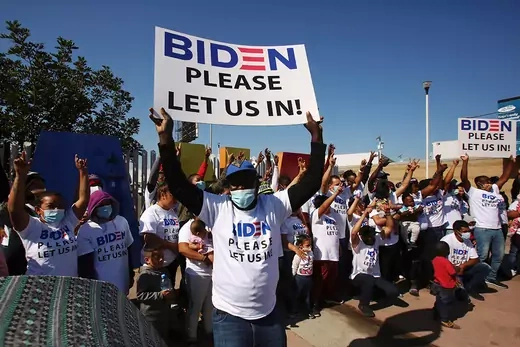
President Joe Biden takes office on January 20 after being elected on a platform that repudiated nearly all of Trump’s signature immigration policies. His initial flurry of executive actions includes orders to pause construction of the southern border wall; revive the refugee resettlement program; and phase out numerous Trump-era restrictions on asylum seekers. He proposes comprehensive reform legislation that would grant a path to citizenship for millions of undocumented residents, and also pledges $4 billion in new aid to Central American countries to stem the flow of migration. While the pandemic-related border restrictions remain in place, authorities face the largest surge in migrants arriving at the U.S. border since 2006. The high numbers of unaccompanied minors lead the administration to reopen some detention facilities and mobilize the Federal Emergency Management Agency (FEMA) to further expand border facilities.
U.S.-Led Withdrawal From Afghanistan
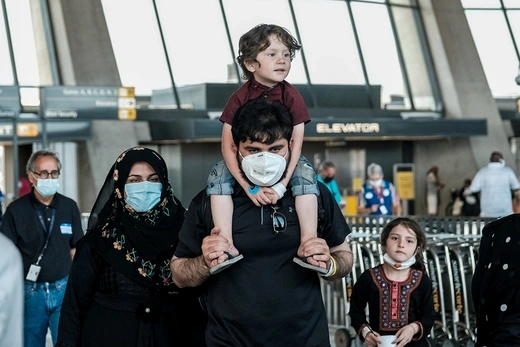
The collapse of the Afghan government amid the U.S. military withdrawal in the country forces Washington to rapidly evacuate its citizens and allied personnel by an August 31 deadline. In one of the largest airlifts in history, the United States and its partners fly more than one hundred thousand people out of the country in just a few weeks. Some of those evacuated are Afghans who assisted the U.S. military and are therefore eligible for a U.S. Special Immigrant Visa (SIV), a program created in 2009 to resettle at-risk allies in the United States. Including family members, as many as one hundred thousand Afghans are eligible for U.S. residency under the program. The system of nonprofit resettlement agencies, which faced budget cuts under the Trump administration, scrambles to manage the influx.
Ukrainians Flee War
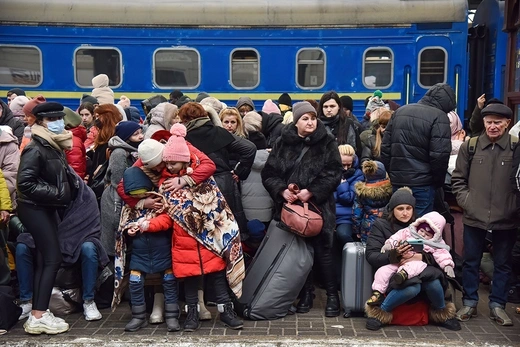
The White House announces that the United States will accept up to one hundred thousand refugees fleeing Ukraine amid Russia’s invasion. Poland and other east European countries host most of the more than 3.5 million Ukrainians who flee in the first weeks of the invasion. Senior U.S. officials say many of the refugees are likely to be admitted under “humanitarian parole,” which allows entry during emergency situations and was previously applied to tens of thousands of Afghans following the U.S. withdrawal in August 2021. The Department of Homeland Security also offers temporary protected status to an estimated thirty-four thousand additional Ukrainians.
White House Braces for End of Title 42
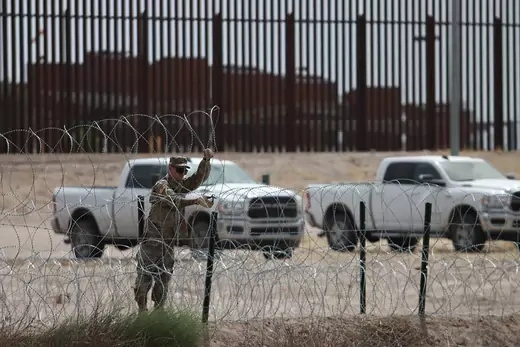
The White House revokes Title 42, a controversial emergency public health measure invoked under President Trump in 2020 to deny asylum on pandemic-related grounds. Fearing a surge in illegal migration after the expiration of the policy, which was used to deport more than 2.7 million migrants, Biden unveils a restrictive new asylum plan that allows the government to deny asylum to migrants who did not previously apply for it in a third country. His administration also announces that it will station 1,500 troops along the U.S.-Mexico border and establish migrant processing centers throughout Latin America. Additionally, Washington says it has reached an agreement with Mexico City to deport non-Mexican migrants and asylum seekers who entered the United States illegally back across the border.
Congress’s Border Policy Debate Intensifies, Affecting Aid to Allies
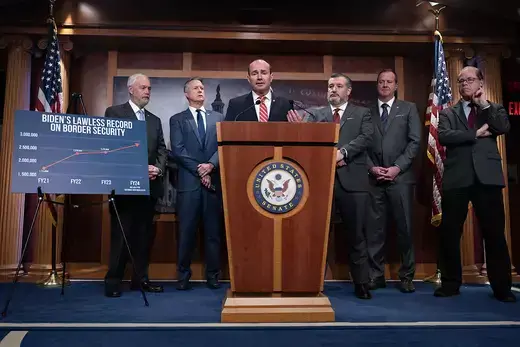
U.S. Customs and Border Protection data reveals that federal agents apprehended close to 2.5 million migrants at the U.S.-Mexico border in fiscal year 2023 (FY 2023), an increase of more than 35 percent from FY 2021. The situation at the border is at the heart of a monthslong debate in Congress over foreign aid and federal funding. Republican lawmakers refuse to advance President Biden’s proposed $105 billion emergency spending bill, which includes additional wartime aid for Israel and Ukraine, unless Democrats agree to incorporate stricter border and immigration policies. Proposed reforms include tougher standards for asylum claims, the resumption of border wall construction, and the reinstatement of the Trump-era “Remain in Mexico” program, which allows border patrol to expel asylum seekers to Mexico while their cases are processed in U.S. immigration courts. Biden says he is willing to make “massive changes” to border policy to unlock the requested funding.
Bipartisan Border Bill Fails

The Senate votes 43–50 to block the Border Act of 2024, the second attempt at passing a sweeping bipartisan bill. The bill would have provided some $20 billion to increase border management and migrant processing capacity and given the president the authority to shut down the border if migration levels exceed certain thresholds, among other measures. Senate Republicans withdraw their support for the bill at the request of former President Donald Trump, who views immigration as a core campaign topic in the 2024 election. Some Democrats, meanwhile, say the bill is too restrictive. Biden says that Republicans “put partisan politics ahead of our country’s national security.” If passed, the bill would have been the most extensive piece of new immigration legislation in decades.
Biden Further Curbs Asylum Access

Biden signs Proclamation 10773, which allows for temporarily limiting the entry of certain foreign nationals into the United States during “emergency border circumstances,” including when the daily average of border crossings exceeds a certain threshold. The Proclamation cites record high levels of migrant encounters at the southern U.S. border. Human rights groups criticize the Proclamation’s Interim Final Rule, which Human Rights First [PDF] argues “denies equal access to asylum and is inconsistent with federal law and the United States’ treaty obligations.” Months later, in September, Biden amends Proclamation 10773 to maintain entry suspensions until encounters between ports of entry fall below a seven-consecutive-calendar-day average of 1,500 for twenty-eight consecutive days, rather than the previous seven. That same month, illegal border crossings fall to their lowest level since 2020.
Trump Signs Flurry of Immigration-Related Executive Orders

Hours after being sworn in as the forty-seventh U.S. president, Donald Trump begins issuing a series of executive orders aiming to fulfill his campaign promises to crack down on both legal and illegal immigration. He declares a national emergency at the U.S.-Mexico border and enables military action there, saying that the current situation “qualifies as an invasion.” He also signs orders revoking birthright citizenship—which is guaranteed by the Fourteenth Amendment to the Constitution—temporarily suspending the U.S. refugee admissions program, directing government agencies to restart the controversial “Remain in Mexico” policy, and designating drug cartels as foreign terrorist organizations. Trump also looks to restrict asylum access, including by shutting down the CBP One program, a border app established by the Biden administration that allows migrants to notify the U.S. government of their intent to apply for asylum, and ending the parole program for nationals of Cuba, Haiti, Nicaragua, and Venezuela.
Trump Deploys National Guard to LA Immigration Protests

On June 7, Trump authorizes the deployment of at least two thousand National Guard troops to Los Angeles to disperse protests that broke out after Immigration and Customs Enforcement (ICE) officers detained dozens of people in several areas of the city. He does so under Title 10 of the U.S. Code, which allows the president to deploy the National Guard to repel invasion, suppress rebellion, or execute laws. It marks the first time in sixty years that a president deploys National Guard troops without a state governor’s approval. Governor Gavin Newsom (D-CA) calls the deployment a “serious breach of state sovereignty.” The administration’s ongoing crackdown on unauthorized immigration includes hundreds of deportation flights of non-U.S. citizens. The move against protesters comes as the administration’s new travel ban enters into effect, barring citizens from twelve countries, mainly in Africa and the Middle East. As the protests continue, several hundred Marines are ordered to deploy to Los Angeles to assist the National Guard.